Difference between revisions of "Woodshop Area"
Mike Hutton (talk | contribs) |
Mike Hutton (talk | contribs) |
||
| Line 38: | Line 38: | ||
==Woodshop Specific Safety== | ==Woodshop Specific Safety== | ||
| − | # All powered woodcutting and sanding tools must be run with dust collection or vacuum equipment connected to the appropriate ports and on at all times. Do not | + | # All powered woodcutting and sanding tools must be run with dust collection or vacuum equipment connected to the appropriate ports and on at all times. Do not switch the dust collector on and off, if you are planning on working with multiple tools, leave the collector on (repeated turning on and off will overheat the motor). |
# Smoke or sparks are bad signs in the woodshop. Stop what you are doing and correct the problem. Usually correct feed and depth of cut or getting a sharp bit / blade will help. | # Smoke or sparks are bad signs in the woodshop. Stop what you are doing and correct the problem. Usually correct feed and depth of cut or getting a sharp bit / blade will help. | ||
# No metal cutting allowed on woodshop equipment. | # No metal cutting allowed on woodshop equipment. | ||
Revision as of 20:00, 9 September 2015
Details: missing details and access policies
Contents
General Information
MakeICT's woodshop is an enclosed 32'x36' (1152 sq ft) air conditioned area dedicated to wood working.
Mike Hutton is the Benevolent Dictator over the woodshop.
The goal of the shop space is to encourage continued learning of the skills needed to further your knowledge of woodworking!
Machine Access Policy
(Questions or comments? Post them here: https://groups.google.com/d/msg/makeict/tDIviQKvUSA/OzFzKISeBgAJ)
Because of the hazardous nature of these tools, before anyone can use the tools, they must pass a regularly scheduled shop safety course that will be posted on the calendar. We want everyone to go home safe and in one piece! SAFE OPERATION of tools is top priority.
Anyone entering the shop will be required to use personal protective equipment (PPE) such as safety glasses, hearing protection, and possibly dust masks (these will be available for purchase).
To protect machinery as well as to protect other members, only new domestic lumber or WELL INSPECTED reclaimed lumber free of sand, gravel, nails, screws, staples or finish will be allowed in the shop, pressure treated lumber is hazardous and will not be allowed any time. Some people are alergic to certain lumber and have become sensitized to being near the materials, therefore no exotic lumber (such as the rosewood family, cocobolo, spalted, etc) will be allowed in the shop to protect all members. When in doubt, ask.
I HIGHLY recommend that we use a buddy system, where no single person is working in the shop without a second person in the building so that if there is an injury, somebody else is there to call for help or assist you.
General Shop Safety
- Do not use any machine you are not trained on and comfortable using. If at any time you are unsure of what you are doing, stop immediately and ask for help. Do not force tools.
- Do not use any machine that is not in good working order. Stop, unplug and leave a note on the machine and notify the woodshop BD.
- NEVER ASSUME A TOOL IS PROPERLY ADJUSTED. Always check the tool prior to use.
- Wear safety glasses at all times when in the shop area, including near the machine shop.
- Ear protection is also recommended, many of the tools operate above 90 decibels and without protection, you are losing hearing.
- When using power tools (including hand power tools):
- No open-toed shoes or loose clothing (remove drawstrings)
- Remove objects on hands and wrists (including rings, bracelets, & watches)
- Remove dangly necklaces, hair ornaments, and earrings
- Restrain long hair to prevent entanglement
- Do not wear gloves when operating machinery
- While hand tools are safer than most power tools, they are the cause of most workshop injuries. Make sure all hand tools are sharp and in good condition. Be certain that you know how to use these tools in a way that is safe, effective, and will not damage the tool.
- Do not leave machines running unattended.
- Never talk to or disturb anyone operating power tools. If you must talk to an operator wait until the operator notices you.
- Be aware of the work going on around you. Do not accidentally bump into another person or their materials while they are working.
- Most shop accidents are caused by working tired, rushed or distracted. As you get more experience, you will learn to listen to the little voice in the back of your mind that says, you probably shouldn't do that. Stop and think, there is usually a safer way of performing that function. These machines do not have a brain, please use yours!
Woodshop Specific Safety
- All powered woodcutting and sanding tools must be run with dust collection or vacuum equipment connected to the appropriate ports and on at all times. Do not switch the dust collector on and off, if you are planning on working with multiple tools, leave the collector on (repeated turning on and off will overheat the motor).
- Smoke or sparks are bad signs in the woodshop. Stop what you are doing and correct the problem. Usually correct feed and depth of cut or getting a sharp bit / blade will help.
- No metal cutting allowed on woodshop equipment.
- No wet or damp items of any type (including drink containers, rags, or hands) may be placed or left on machine surfaces as they will corrode.
- Do not lean or sit on machinery, these are precision pieces of equipment and you can mis-align them.
- You are responsible for cleaning your machines, your work space, and putting all tools away immediately after use. Scrap wood should be placed in designated locations. Use vacuums or hand brushes to clean machinery.
- Users who consistently fail in their clean-up responsibilities may be denied shop access.
- Do not use stationary equipment work surfaces for sanding, project assembly, layout, applying finishes, etc. Or for uses other than their intended purpose.
- Make sure machines are in the “off” position and motion has stopped, before leaving them after use.
- All safety guards must be kept in place while operating equipment. If a guard or safety device is an impediment to safe operation of a machine - ask for help.
- Use equipment only for its intended use.
- If you have made an adjustment to a piece of equipment, return it to its normal position after you are done.
- Make sure the machine’s work surface is unobstructed and clean before use.
- Always be aware of the proximity of moving machine parts to body parts - fingers.
- Defects in the wood can be dangerous. Check the stock carefully for knots, splits, and other defects.
- Keep the machine clean. Remove all tools, lumber, and unnecessary materials.
- Objects left on the machine can vibrate into revolving cutters. They can then be thrown from the machine with great force. Never clean a machine while it is running.
- All guests are the responsibility of the member, guests are not allowed to use equipment. This is a working shop, so children less than 7 years old are not allowed for safety.
- Member will be responsible for replacing the blade and Sawstop brake if the brake is fired for anything other than a true safety firing.
This is a video on table saw kickback. Do not try this in the woodshop!
Equipment List
| Picture | What | Manufacturer | Model | Power | Status | Expert | How To |
|---|---|---|---|---|---|---|---|
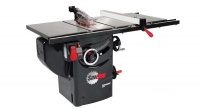 |
10" Cabinet Table Saw | Saw Stop | Professional PCS31230 | 220 | Setup | Mike H. | manual |
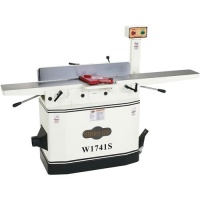 |
8" Carbide Helical Head Jointer | Shop Fox | W1741S | 220 | Setup | Mike H. | manual |
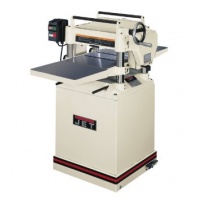 |
15" Carbide Helical Head Planer | Jet | JWP-15HH | 220 | Setup | Mike H. | manual |
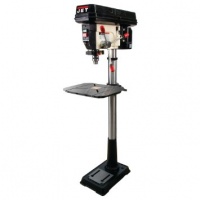 |
17" Drill Press with laser | Jet | JDP-17DX | 110 | Setup | Mike H. | |
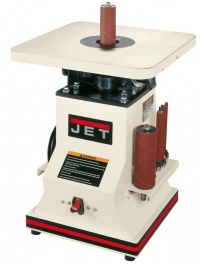 |
Oscillating Spindle Sander | Jet | JBOS-5 | 110 | Setup | Mike H. | manual |
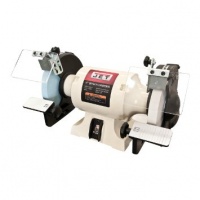 |
Low Speed 8" Bench Grinder | Jet | JWBG-8 | 110 | Setup | Mike H. | manual |
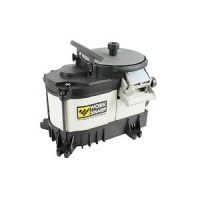 |
Tool Sharpener | Work Sharp | WS3000 | 110 | Setup | Mike H. | User's Guide |
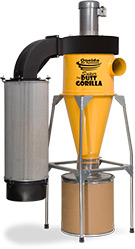 |
Cyclone Dust Collector | Oneida Air | 5HP Super Dust Gorilla | 220 | Setup | Mike H. | Owner's Manual |
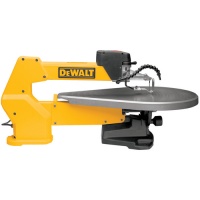 |
Scroll Saw | Dewalt | DW788 | 110 | Setup | Mike H. | File:383329-00,DW788.pdf |
 |
Scroll Saw | Delta | 40-560, TY II | 110 | Setup | Mike H. | File:Delta 40-560manual.pdf |
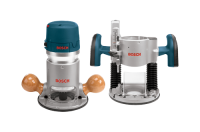 |
2.25HP Router | Bosch | 1617EVSPK | 110 | Setup | Mike H. | File:BoschRouterManual.pdf |
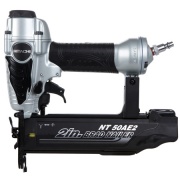 |
2" 18Gauge Finish Nailer | Hitachi | NT50AE2 | Air | Setup | Mike H. | Owner's Manual |
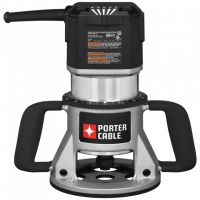 |
Router Table with JessEm Lift | Porter Cable | 7518 | 110 | Setup | Mike H. | File:PorterCable7518OwnerManual.pdf |
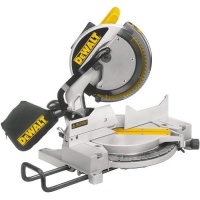 |
12" Double Bevel Miter Saw | Dewalt | DW705 | 110 | Setup | Mike H. | File:DewaltDW705OwnerManual.pdf |
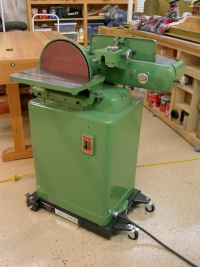 |
6x48 Belt/12 Disc sander | PowerMatic | 30b | 110 | Setup | Mike H. | |
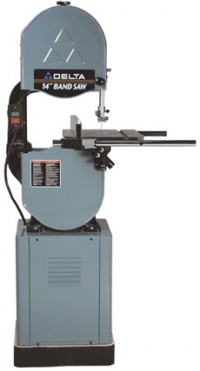 |
14" Bandsaw | Rockwell | 14" Enclosed Base | 110 | Setup | Mike H. | File:Delta 14 bandsaw.pdf |
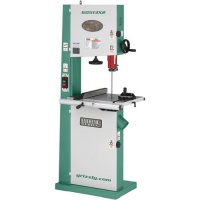 |
17" Bandsaw Extreme Series | Grizzly | G0513X2 | 220 | Setup | Mike H. | File:G0513x2 manual.pdf |
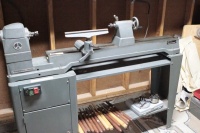 |
12x36 Wood Lathe | Rockwell | 110 | One Setup | Mike H. |